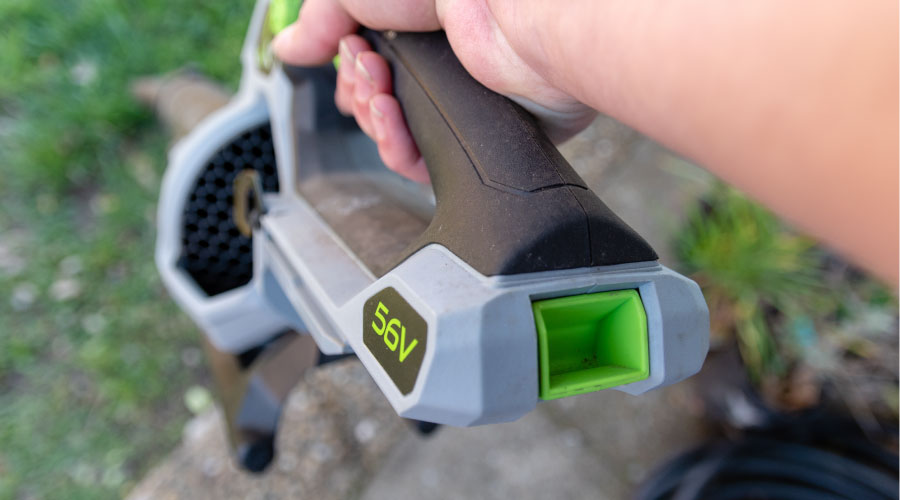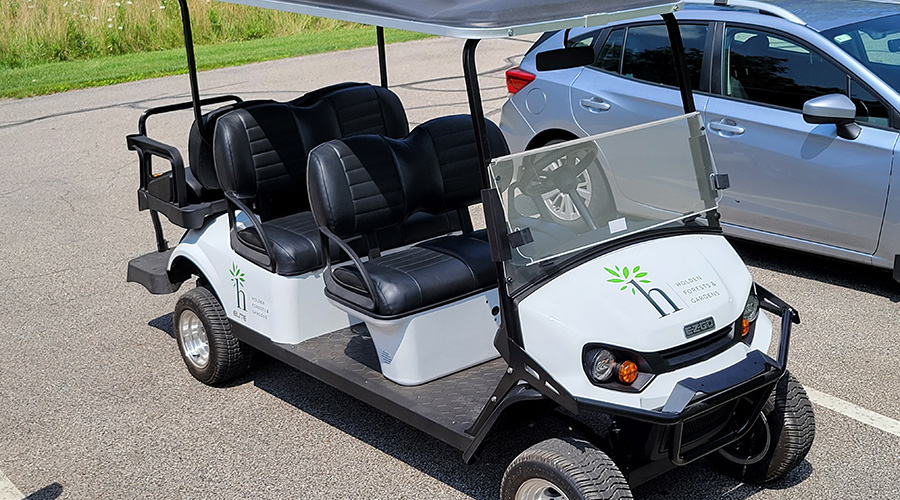Grounds for Safety
Employee participation, site-specific strategies, and effective communication are grass-roots elements of a successful grounds-care safety program
Grounds care managers know that lawn and landscape maintenance is not an easy or stress-free occupation, and they are taking workplace safety more seriously than ever. From mowers, decks and utility vehicles to trimmers, edgers and brush cutters, grounds care workers regularly handle equipment that — no matter how well designed or manufactured — presents potential safety problems.
In developing a comprehensive safety and health program, the first items to address are lawn mowers and pesticides. But the safety challenge does not end there. Among the issues that a grounds care managers must address are electrical safety, emergency preparedness, ergonomics, personal protective equipment (PPE), first aid, flammable materials, material safety data sheets, record keeping, slips and falls, and employee training.
Benefits of Safety
Making a commitment to improved safety in grounds care has many benefits, including reduced human suffering from injuries, illness or death; an improved financial outlook due to lower insurance premiums, less down time and lost productivity; and fewer legal consequences.
OSHA standards and regulations do not mandate safety and health programs, but such programs are important for creating a culture of safety within an organization. Establishing a safety and health program can communicate the corporate, institutional, municipal or departmental philosophy, rules, strategies, policies and responsibilities associated with on-the-job safety.
OSHA’s draft proposal of a safety and health program includes five key items.
Management leadership and employee participation. Show visible management leadership, and document the necessity for employee involvement.
Hazard identification and assessment. Demonstrate in-depth hazard recognition and perform comprehensive inspections of conditions, behaviors and conduct.
Hazard prevention and control. Among the requirements are safe work practices, providing PPE and maintaining properly working equipment. An emergency preparedness and response plan also is critical.
Information and training. Organizations must provide and document hands-on and classroom instruction for all employees involved with particular operations.
Evaluation of program effectiveness. Managers must review the procedures and outcome and ask: Is the program effective? What do we need to change?
Grass-roots Support
Perhaps the surest step to success in grounds care safety is to let front-line operators and mechanics know the importance of safety and to get them to commit to any measures necessary to inspect and use equipment safely. Managers need to make it obvious to employees that protecting their safety and health is the key reason to instill a safety culture at all levels.
Managers also can reinforce the financial reasons for continued focus on safety. When budgets are tighter than ever, managers can explain that safety really is a financial matter. Costs associated with injuries, accidents and illness can severely dent a company's bottom line. If more dollars are going out in workers compensation claims, insurance premiums, paperwork, equipment repair, retraining, and legal fees than are coming in, there is less money available for wages, which might mean a reduction in job security for some workers.
Employees must be able to see that the company is also committed to safety. Organizations need to make time and money available to implement all parts of the safety plan, and they should establish guidelines and communicate to employees their specific responsibilities concerning workplace safety and health.
Making Safety Work
An essential step in tailoring safety programs to organizational needs is asking employees to identify safety concerns. Managers must encourage them to speak up when they witness unsafe practices, and they must feel comfortable reporting any concerns and knowing that their comments will be taken seriously.
Placing a safety suggestion box in a public area of the department might help encourage participation by keeping comments anonymous. But safety concerns should not have to wait until a monthly staff meeting to be addressed. The box must be checked daily and concerns acted upon promptly. If visible changes are not made, suggestions will not continue, either.
Managers should assign one person to check the box but assign a variety of employees the task of addressing any comments or complaints. For example, if one reports addresses the issue of an employee overriding the automatic shut-off on a mower, that issue should be given to the supervisor to deal with immediately.
If one complaint brings up the issue of unsafe storage of gas cans, an operations manager might check into the current practice, develop a safe procedure, and hold a short training session to teach the new policy. Managers, supervisors, foreman, office staff and technicians all can be involved in assessment, development and training of safety procedures.
Check and Check Again
Hazard prevention and control also is an essential component of any effective safety and health program. Many of the tools and equipment used today are engineered for safety, so it is extremely important to reinforce the use of all safety features. All of the safety features in the world are useless if operators do not use them.
Employees should never be allowed to override safety features, even if it means it will take them longer to complete a task. If safety features are neglected and there is an injury, the task might never get done.
Operators shouldn’t wait to inspect equipment for safe operation until they are about to start a project. Instead, they should complete a safety inspection checklist every morning before putting the equipment into use. Just because it worked yesterday does not mean it is safe to use today. Operators and mechanics should follow a routine maintenance schedule to insure the equipment is in proper working order at all times. If the equipment is not in good working order, the operator should know that they have a right to tag the equipment and lock it out of operation until it is fixed.
Another strategy for avoiding hazards is inspecting equipment for safety features before purchase. Managers and others taking part in specification must make sure equipment is easy to maintain and comfortable to use and that safety features do not make the equipment cumbersome to operate.
Personal protective equipment — including but not limited to, proper footwear, gloves, safety glasses, ear protection, hats and helmets — are important components of hazard prevention. Managers must make the proper protective equipment available and mandate its use.
Talking Safety
Information and training are essential to instilling safe procedures into the work force. Managers can have safety manuals compiled and signs posted throughout a department, but these tactics will have little impact if the information is not personally presented in such a way that employees understand both its importance and implementation.
Classroom sessions, demonstrations, and in-the-field training all are necessary to convey proper safety procedures. Training need not be sophisticated computer-generated presentations, videos or elaborate manuals to be effective. The most important aspect of training is that managers take the time to do it. A simple, hand-drawn diagram showing the proper way to secure a mower on a trailer, along with a five-minute demonstration and 10 minutes of practice, can work just as well — and maybe better.
Employees at all levels should responsible for some type of training. Managers can give them each an assignment and schedule a time for them to make their presentations. If all employees are expected to make a presentation, then no one should feel uncomfortable.
Many community resources are also available for training. The Red Cross, local hospitals, manufacturers' sales representatives, the fire department or utility company, and an insurance agent all can provide valuable safety training information and even actual training.
Finally, managers should regularly evaluate safety and health programs. Set aside time monthly, bimonthly, semi-annually or annually to review the progress of the program and determine its effectiveness. The newer the program, the more frequently the evaluations should be done.
Once again, managers should get everyone involved by asking for input on tactics and actions that are working, and those that aren’t. During the review process, managers should keep in mind that employees at different levels with different responsibilities might have very different opinions of efforts that are succeeding and those that are not.
Related Topics:











